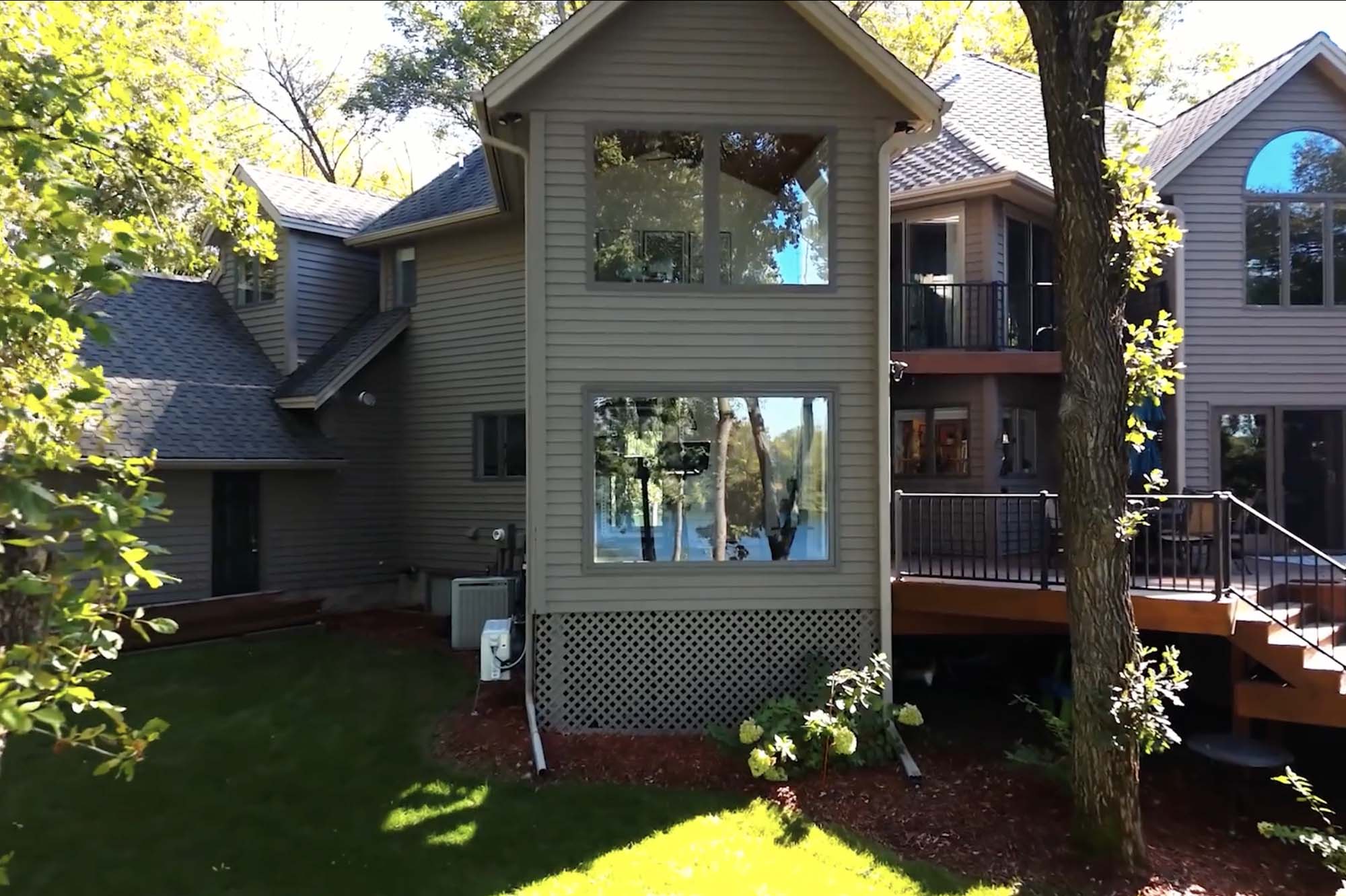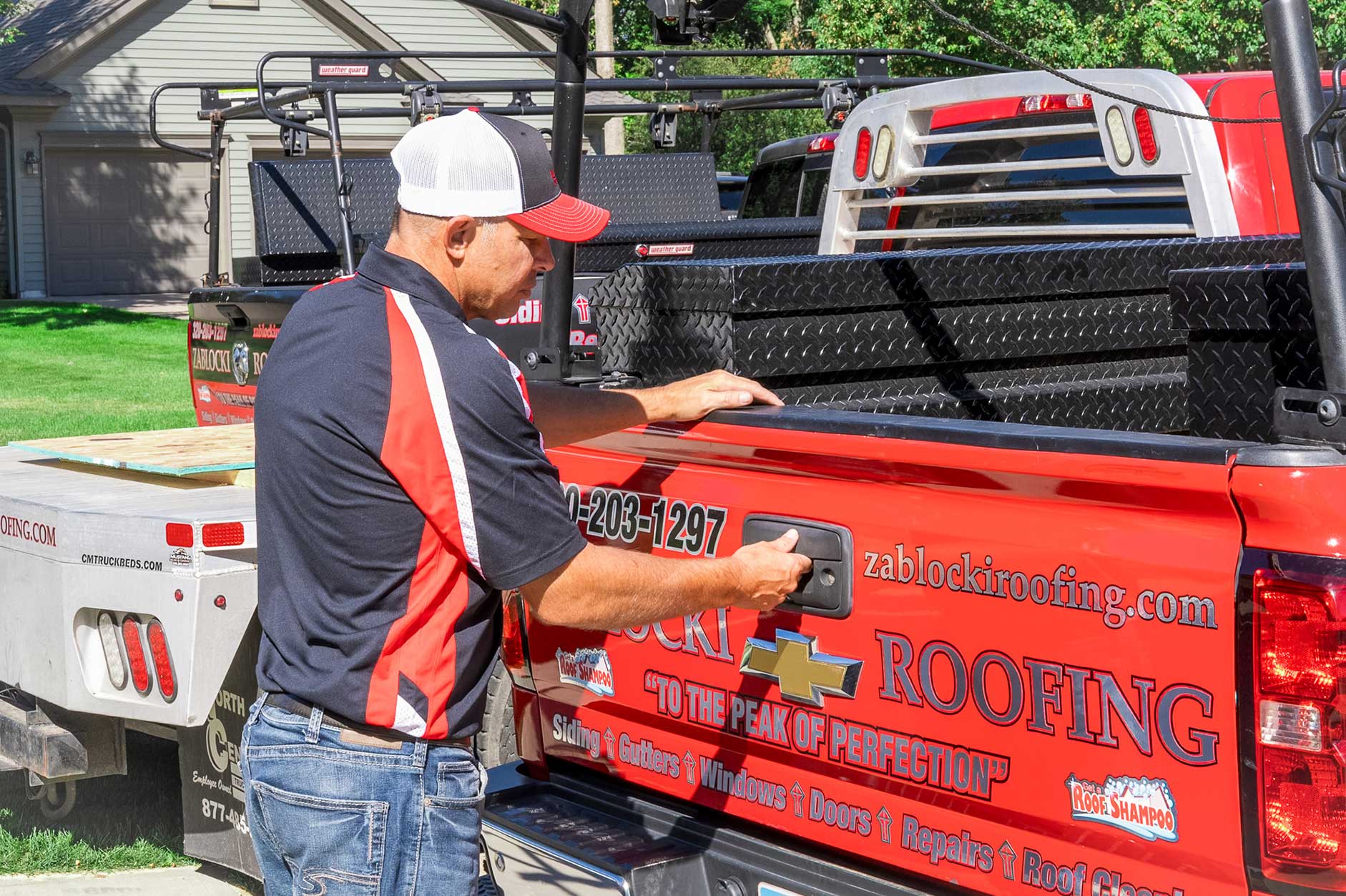How Long Does a Roof Last
This comprehensive guide explores roof lifespan expectations for Central Minnesota homeowners, covering material durability from asphalt shingles (15-30 years) to premium slate options (50-100+ years).

Your roof represents one of the largest investments in your home. Understanding its expected roof lifespan is crucial for planning and budgeting. Most Central Minnesota homeowners wonder how many years they can expect from their roofing system before replacement becomes necessary.
The answer depends on several key factors. These include the roofing material, installation quality, climate conditions, and maintenance practices. While some roofing materials last decades, others may need replacement much sooner. Understanding these differences helps you make informed decisions about your home's protection.
In Central Minnesota's harsh climate, with heavy snow loads and temperature extremes, roof durability becomes even more critical for St. Cloud, Sauk Rapids, and Sartell area homes.
Average Roof Life by Material Type
Different roofing materials offer vastly different lifespans and performance characteristics. The average roof life varies significantly based on the material you choose. This makes material selection one of the most important decisions for long-term home ownership.
Asphalt Shingles
Asphalt shingles remain the most popular roofing choice for American homes. They typically last 15 to 30 years. Three-tab shingles generally fall on the shorter end of this range. Architectural shingles can reach the full 30-year mark with proper care.
The popularity of asphalt shingles stems from their affordability and ease of installation. However, their shorter lifespan means more frequent replacement compared to premium materials. Central Minnesota's weather conditions significantly impact asphalt shingle roof durability. Extreme heat, cold, and storms accelerate wear.
Quality varies considerably among asphalt shingle manufacturers. Higher-grade shingles with better granule adhesion and thicker construction typically outlast budget options by several years.
Metal Roofing
Metal roofing systems offer exceptional longevity. Their lifespans range from 40 to 70 years. Steel, aluminum, and copper roofing each provide different benefits and durability levels.
Steel roofing with quality coatings resists rust and corrosion for decades. Aluminum roofing excels in challenging environments. Copper roofing represents the premium option, often lasting over 100 years with minimal maintenance.
The initial investment in metal roofing is higher than asphalt. However, the extended roof lifespan often makes it more economical over time. Metal roofs also provide excellent energy efficiency and weather resistance against Minnesota's harsh winters.
Slate and Tile Roofing
Natural slate roofing offers unmatched longevity. Properly installed systems last 50 to 100+ years. Some slate roofs installed in the early 1900s still protect homes today. This demonstrates this material's incredible durability.
Clay and concrete tiles also provide exceptional longevity. They typically last 50 to 100 years. These materials resist fire, insects, and rot while maintaining their appearance for decades.
The main considerations with slate and tile roofing include:
- Weight requirements for structural support
- Installation complexity requiring specialized expertise
- Higher upfront costs offset by decades of protection
Other Roofing Materials
Wood shakes and shingles offer natural beauty with lifespans of 20 to 40 years. Cedar shakes typically last longer than pine or other softwood options. Regular maintenance and treatment significantly impact wood roofing longevity.
Clay tiles can last 50 to 100 years in appropriate climates. Rubber roofing systems vary widely. EPDM systems last 10 to 50 years depending on quality and installation.
Key Factors That Impact Roof Durability
Several critical factors determine how long your roof will actually last. This applies regardless of the material's expected lifespan. Understanding these factors helps you maximize your investment and plan for future needs.
Weather Conditions
Climate plays a major role in roof durability across all material types. Central Minnesota's extreme temperature fluctuations cause expansion and contraction. This stresses roofing systems over time.
Heavy snow loads test structural integrity and fastener strength. High winds can lift shingles and create vulnerable spots for water infiltration. Hail damage can significantly shorten roof life, particularly for asphalt shingles.
Minnesota's harsh winters create additional challenges:
- Ice dam formation that damages roof edges
- Snow load stress on structural components
- Freeze-thaw cycles that accelerate material deterioration
Regional climate patterns affect roof replacement timing decisions. Homes in harsh climates like Central Minnesota may need replacement sooner than those in moderate conditions.
Installation Quality
Installation quality dramatically impacts actual roof lifespan compared to manufacturer estimates. Poor installation techniques can cut roof life in half. This happens regardless of material quality.
Correct flashing installation around chimneys, vents, and roof penetrations prevents water damage. Proper fastener placement and spacing ensure the roofing system can withstand wind loads. Adequate ventilation prevents moisture buildup that leads to premature deterioration.
Working with experienced, licensed contractors ensures optimal installation techniques. Quality installation often includes comprehensive warranties that protect your investment.
Roof Maintenance
Regular maintenance significantly extends roof durability by addressing small problems before they become major issues. Well-maintained roofs often exceed their expected lifespans. Neglected roofs fail prematurely.
Preventive care includes annual inspections, gutter cleaning, and prompt repair of minor damage. Professional maintenance programs identify potential problems early when repairs are less expensive.
Many homeowners underestimate maintenance importance until serious problems develop. Consistent care represents a small investment that pays significant dividends in extended roof life.
Warning Signs Your Roof Needs Replacement
Recognizing replacement signs helps you plan ahead and avoid emergency situations. Some indicators suggest immediate attention. Others signal the need for roof replacement timing planning.
Visual Damage Indicators
Missing, cracked, or curled shingles indicate weathering and potential failure points. Granule loss from asphalt shingles exposes the underlying mat to UV damage. This accelerates deterioration.
Sagging areas suggest structural problems that require immediate evaluation. Damaged flashing around chimneys and vents creates water infiltration risks.
Multiple damaged areas across the roof surface often indicate system-wide aging rather than isolated problems. Widespread damage typically justifies replacement over extensive repairs.
Interior Warning Signs
Water stains on ceilings or walls indicate active leaks that threaten structural integrity. Even small stains suggest moisture intrusion that can cause extensive damage over time.
Daylight visible through roof boards signals serious structural problems. Higher energy bills may indicate compromised insulation due to moisture damage or inadequate ventilation.
Musty odors in the attic often indicate moisture problems. These compromise both roof structure and indoor air quality. These signs warrant immediate evaluation.
Age-Related Concerns
Roof age becomes a significant factor as systems approach their expected lifespan. Even well-maintained roofs eventually require replacement due to material fatigue and weathering.
Planning replacement before complete failure allows for better timing and budget management. Emergency replacements often cost more and limit material choices due to weather constraints.
Consider replacement when repair costs exceed 25-30% of replacement cost. This is especially true for older roofs. Multiple repair needs often indicate system-wide aging that makes replacement more economical.
Extending Your Roof's Lifespan
Proactive care significantly impacts actual roof lifespan compared to manufacturer estimates. Simple maintenance tasks and professional services help maximize your roofing investment.
Regular Maintenance Tasks
Seasonal inspections help identify problems early when repairs are simpler and less expensive. Look for loose or damaged shingles, clogged gutters, and debris accumulation.
Clean gutters prevent water backup that can damage roof edges and fascia boards. Remove leaves, branches, and other debris that trap moisture and promote deterioration.
Additional maintenance tasks include:
- Trimming overhanging tree branches to prevent storm damage
- Removing moss and algae growth
- Checking and cleaning roof vents
- Addressing minor issues promptly
Professional Maintenance Services
Annual inspections provide expert evaluation of roof condition and remaining lifespan. Experienced roofers identify problems that homeowners often miss.
Professional maintenance includes specialized treatments like moss removal and protective coatings. These services help extend roof life beyond typical expectations.
Early problem detection through professional maintenance often saves thousands in major repair costs. Regular service relationships also provide priority scheduling for urgent repairs.
For Central Minnesota homes, professional services should include ice dam prevention and snow load assessment during winter months.
When to Repair vs Replace
Repair makes sense for localized damage on newer roofs with good overall condition. Extensive damage or multiple problem areas often justify replacement. This is especially true on older systems.
Age factors heavily into repair versus replacement decisions. Repairs on roofs approaching their expected lifespan may not provide good value compared to replacement.
Consider future maintenance needs when evaluating repair options. Systems requiring frequent repairs often benefit from replacement that eliminates ongoing maintenance concerns.
Planning for Roof Replacement
Strategic planning for roof replacement helps you make better decisions and manage costs effectively. Understanding your options and timing helps ensure successful project outcomes.
Budgeting for Your New Roof
Replacement costs vary significantly based on material choice, roof complexity, and local labor rates. Premium materials cost more initially but often provide better long-term value through extended roof durability.
Many homeowners benefit from financing options that spread costs over time. Insurance coverage may apply if replacement results from covered damage like storms or hail.
Plan replacement during favorable weather seasons when contractors have more availability. Avoid emergency situations that limit options and increase costs.
Choosing the Right Roofing Material
Consider your local climate when selecting roofing materials. Some materials perform better in specific weather conditions. This affects actual roof lifespan in Central Minnesota.
Balance initial cost against expected longevity and maintenance requirements. Higher upfront investments often provide better long-term value through reduced replacement frequency.
Architectural style and neighborhood standards may influence material choices. Some homeowners associations have specific requirements that affect material selection.
For Minnesota homes, consider materials that handle:
- Heavy snow loads
- Ice dam formation
- Extreme temperature variations
- High wind events
Working with Professional Roofers
Licensed, experienced contractors ensure optimal installation that maximizes roof durability. Research contractors thoroughly, checking licenses, insurance, and local reputation.
Quality contractors provide detailed estimates, explain material options, and offer comprehensive warranties. They also handle permit requirements and ensure compliance with local building codes.
Establish clear communication expectations and project timelines before work begins. Professional contractors maintain regular communication throughout the project to address any concerns.
Comprehensive Roofing Services in Central Minnesota
Understanding roof lifespan expectations helps you make informed decisions about maintenance, repairs, and replacement timing. Whether your roof needs immediate attention or you're planning for future replacement, professional expertise ensures optimal outcomes.
At Zablocki Roofing & Exteriors, we provide comprehensive roofing services throughout Central Minnesota. Our experienced team serves St. Cloud, Sauk Rapids, Sartell, Waite Park, and Elk River. We help homeowners maximize their roofing investments through quality installation, professional maintenance, and expert replacement services.
Our complete services include:
- Roof replacement for all material types
- Professional roof inspections and maintenance
- Ice dam removal and prevention services
- Gutter cleaning and installation to protect your roof system
- Siding replacement to complement your new roof investment
Contact Zablocki Roofing & Exteriors today for a free roof inspection. Our professionals will assess your roof's current condition, explain your options, and help you plan for your home's long-term protection. Don't wait for emergency situations to address your roofing needs.
As your trusted roofing contractor in St. Cloud MN and throughout Central Minnesota, we're committed to protecting your most important investment. Call us now to schedule your consultation and discover how we can help extend your roof's lifespan.



